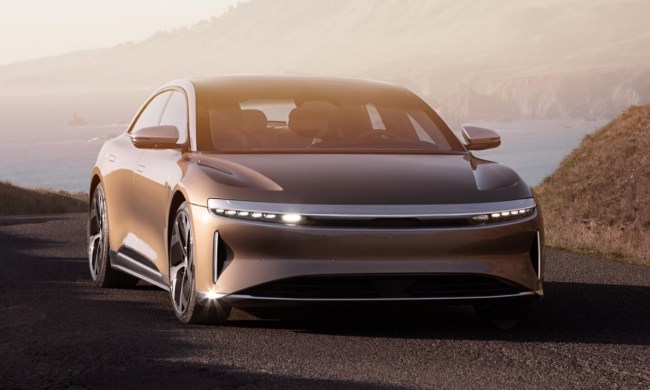
We’re finally getting to the fun part of automakers’ methodical quest to replicate their lineups with electric cars.
Performance versions of ordinary cars have been a staple of the auto industry for decades. But while we’ve already seen some variants of EVs boasting more power and more impressive stats — think Tesla Model S Plaid or Lucid Air Sapphire — the 2025 Hyundai Ioniq 5 N is the first to truly apply that format to an EV.
The Ioniq 5 N isn’t just a faster Ioniq 5. It has more power, yes, but it also tries to replicate the visceral feel of internal-combustion Hyundai N performance cars — right down to simulated gearshifts and engine sounds. These novel features also help justify a steep base price. At $67,475, the N is $8,700 more than a fully loaded dual-motor Ioniq 5 Limited.
Design
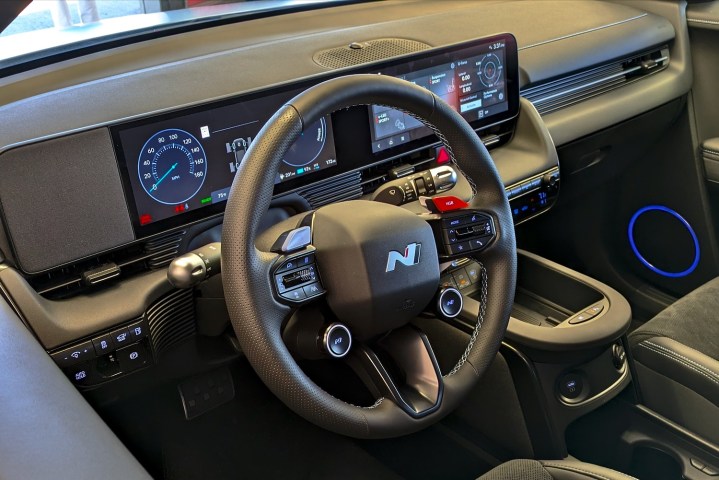
Hyundai applied the expected performance car visuals to the Ioniq 5’s distinctive shape. Flared wheel arches widen the car by 2.0 inches and make room for girthier summer performance tires mounted on 21-inch forged aluminum wheels. The N sits 0.79 inch lower than a standard Ioniq 5, further eroding Hyundai’s claim that this is a crossover SUV rather than a sales-kryptonite hatchback.
The N also sports aerodynamic appendages like front and rear spoilers, as well as a rear diffuser that sticks out so far that it makes the N 3.2 inches longer than a standard Ioniq 5. All of these elements are functional, helping to optimize airflow over the body, Hyundai claims. The same goes for the prominent air intakes cut into the front bumper, which help provide cooling air to the battery pack and motors.
Hyundai applied the expected performance visuals to the Ioniq 5’s distinctive shape.
What you can’t see are the structural reinforcements that help make body more rigid, which improves handling by providing stiffer mounting points for the suspension. The body shell features 42 additional welding points and 6.9 feet of added structural adhesive. The motor, battery pack, and steering rack mounts were also strengthened. So while aftermarket tuners may eventually find a way to replicate the N’s power, it will be difficult to match this factory hot rod’s robust structure.
Interior changes include a steering wheel with added buttons and paddles to control the various drive modes and features, seats with added bolstering that are mounted 0.79 of an inch lower for better weight distribution, and a center console with kneepads that keeps small items from being flung about the cabin during hard cornering. More importantly, the N has the same the passenger and cargo space as the standard Ioniq 5 which, while not class-leading, still makes this a practical everyday car.
Tech

The Ioniq 5 N is also a practical everyday car because most of the tech features carry over from the standard Ioniq 5. A 12.3-inch digital instrument cluster and 12.3-inch touchscreen are arranged side by side to make one continuous display spanning roughly half the dashboard. Wireless Apple CarPlay and Android Auto are standard, along with Wi-Fi, digital key functionality, and the Hyundai Pay in-car payment system.
The screens do a bit more work than in the standard Ioniq 5, because there’s a lot more information to be displayed. The instrument cluster can toggle from the more basic layout of the standard Ioniq 5 to an N-specific layout that shows motor and battery temperatures, as well as settings for steering, suspension, and power output, among other things. The main touchscreen can show front and rear torque distribution, the amount of throttle or brake the driver is using, and lap times.
Most of the tech features carry over from the standard Ioniq 5.
This car’s focus on performance doesn’t mean you get less driver-assist tech, either. Standard features include lane-keep assist, rear cross-traffic alert, Hyundai’s trademark blind-spot camera system, adaptive cruise control, a Highway Driving Assist 2 system with automated lane centering, and an advanced rear occupant alert system that uses radar to detect movements as subtle as a baby’s heartbeat, Hyundai claims.
All of the driver aids can be easily deactivated by switching to one of the track-oriented drive modes, so you won’t be getting forward-collision warning alerts as you approach a braking zone at high speeds. And having them all available for road driving adds to the N’s everyday usability.
Driving experience

Fed by an enlarged 84-kilowatt-hour battery pack (compared to 77.4-kWh for the standard Ioniq 5), the Ioniq 5 N’s dual-motor all-wheel drive powertrain produces 601 horsepower and 546 pound-feet of torque by default or 641 hp and 568 lb-ft with the N Grin Boost function, which is available for 10.0-second bursts. With N Grin Boost and launch control engaged, Hyundai estimates zero to 60 mph in 3.2 seconds and a 162-mph top speed.
Like most electric cars, the Ioniq 5 N doesn’t have a multi-speed transmission. But Hyundai decided to simulate the feel of the eight-speed dual-clutch gearboxes in its gasoline N cars with a feature called N e-shift, while N Active Sound+ provides an internal-combustion soundtrack. Both features provide a more familiar experience for EV newbies and, Hyundai claims, give the driver more feedback by providing some the cues normally used to judge speed in a combustion car.
The Ioniq 5 N is everything you’d want in a track-capable road car.
Hyundai staged the Ioniq 5 N media drive at California’s Laguna Seca Raceway, a track made famous for its appearances in Gran Turismo and Forza Motorsport. N Active Sound+ added to the video game feel, in that it felt like it was programmed by sound designers for one of those games. The artificial soundtrack felt overdone not because of the sounds themselves, which range from an internal-combustion overrun crackle to simulated sonic booms, but because there was too much of it, as if the goal was to make everything as dramatic as possible. The same goes for the simulated shifts, which made acceleration feel more dramatic even though, because of the interruption of power for each “shift,” we were probably going slower.
The added drama wasn’t necessary. The Ioniq 5 N is everything you’d want in a track-capable road car, providing an exhilarating experience on its own. The various software-based functions used to make it handle better (and compensate for this EV’s 4,861-pound curb weight) fade into the background; all you’ll notice is how unfazed the Ioniq 5 N feels as you charge into corners, erase speed with its impressive brakes, and unleash the full 600-plus-hp on exit. The Ioniq 5 N lets you ignore the fact that it’s an EV and just concentrate on going faster.
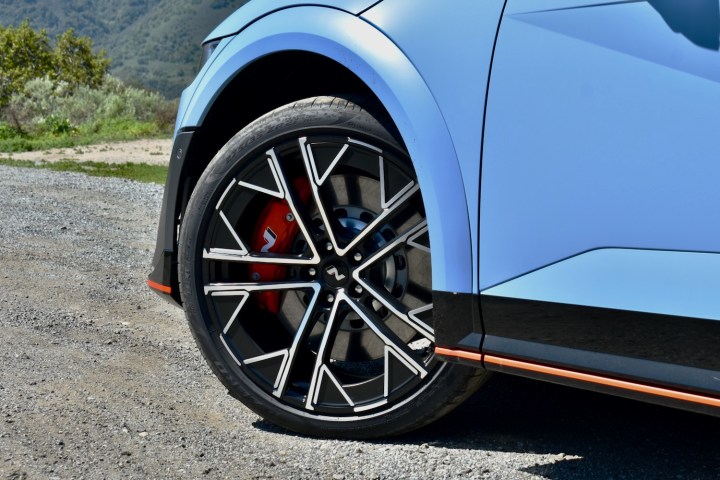
It was also easy to ignore the Ioniq 5 N’s electric powertrain because its performance didn’t degrade during our track session. Heat buildup in battery packs can be a problem here, but the Ioniq 5 N was unfazed. Hyundai has also tried to guard against battery overheating with a preconditioning system, similar to what’s sometimes used to get batteries into the ideal temperature window for charging. Hyundai even lets drivers choose between settings for short sprints or longer track sessions, part of a long list of settings that covers everything from drag racing to drifting.
Dial everything down, and the Ioniq 5 N is also a usable road car, albeit one that’s just biding its time until the next trip to the racetrack. Ride quality is short of truly comfortable, but reasonable for everyday use. And while precise steering and well-sorted suspension maintain some of the entertainment factor on twisty roads, it’s harder to ignore this car’s considerable weight at road-legal speeds. Some cars are enjoyable no matter what speed you’re driving, but the Ioniq 5 N really needs a racetrack to be appreciated.
Range and charging
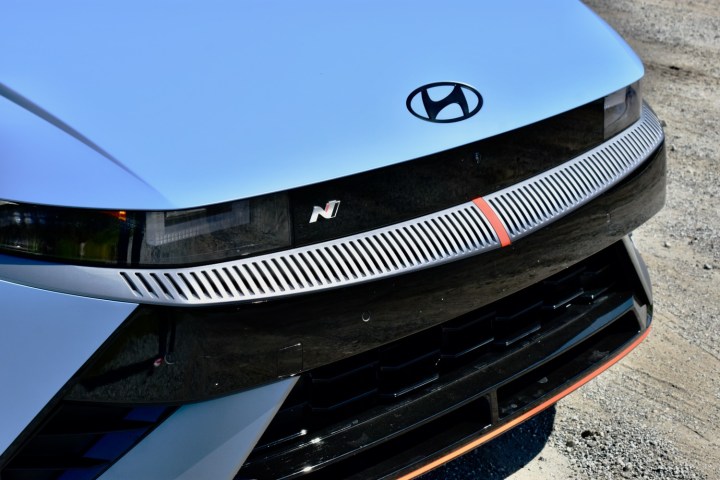
The N’s less-aerodynamic shape and grippier tires mean that, despite the larger battery pack, it has less range than other Ioniq 5 models. Hyundai estimates 221 miles, compared to a best rating of 260 miles for non-N dual-motor models. Hyundai still expects the Ioniq 5 N to complete a 10% to 80% DC fast charge in the same 18 minutes as other Ioniq 5 models, though, assuming you can find a 350-kilowatt charging station that allows the car to charge at full power.
For our track session, we started with a roughly 90% charge and saw an indicated 58% during our cooldown lap, which followed about 20 minutes of lapping. That’s about the typical stint of a track day, but if we’d gone back out, range would have likely been an issue — especially if we’d been driving home afterward. That’s because ,while the Ioniq 5 N can charge fast, not every racetrack has high-power fast chargers.
Building chargers is not a big deal. Hyundai has already installed some at a track in South Korea to support a racing series for the Ioniq 5 N. But as with regular public charging, it remains to be seen whether automakers will step up and ensure there is adequate infrastructure for customers to get the most out of their EVs.
How DT would configure this car
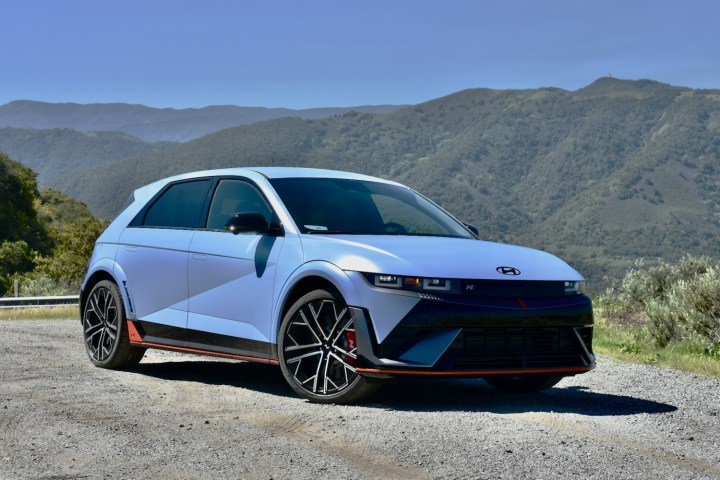
The Ioniq 5 N is sold in a single configuration with all the bells and whistles. Unlike some other performance sub-brands, Hyundai N doesn’t leave any important hardware on the table, or make buyers pay extra for the highest-performance specs. The N also includes most of the major tech and convenience features from the standard Ioniq 5. So while it’s a big step up in price, you do get a lot for your money.
If you don’t plan on taking your car to the track, though, the Ford Mustang Mach-E GT (with the optional Performance Upgrade) or Tesla Model Y Performance both offer sporty driving dynamics for less money than the Hyundai. Both also offer more range than the Ioniq 5 N, and are only a few tenths of a second slower in the zero to 60 mph sprint. Neither is as hardcore as the Hyundai, but the differences will only come out in situations that require a helmet and the signing of a waiver.
The Ioniq 5 N looks better as an electric alternative to internal-combustion performance cars. It’s slightly cheaper than a Chevrolet Corvette Stingray, for example, much more practical, and is still engaging to drive. It may seem like an odd comparison, but this is what the Ioniq 5 N is all about. It wasn’t designed to be the best EV for everyone, it was designed to be the best EV for people who love cars and driving. Mission accomplished.


